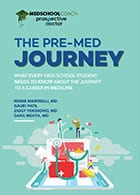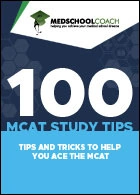
Table of Contents
Your Rank Order List (ROL) is the list of residency programs that you rank in order of your true preference for specific residencies after the interview process. Residency programs also submit their own ROL of applicants they have interviewed and want to hire.
The Match algorithm then pairs applicants and programs based on these lists. If you rank a program high and they rank you high, you’re likely to match there.
This cycle’s important dates are:
- February 3, 2025 @ 12p EST: The ROL entry period begins, and you can start working on your list.
- March 5, 2025 @ 9p EST: This is the rank order list deadline. All ROLs must be finalized and certified by this date.
Below, I review how this algorithm works, how to create your own ROL, and what to avoid.
WATCH THE WEBINAR: Standing Out on ERAS
Creating Your List in the R3 System
The NRMP Registration, Ranking, and Results (R3) system is the algorithmic software that matches applicants’ ROLs to each program.
After the entry period begins, Match applicants can include up to 20 unique program codes on their primary ROL and an additional 20 on all supplemental ROLs together. Applicants are responsible for fees incurred to include extra programs, and no more than 300 ranks may be used on any ROL.
Read Next: Average Residency Applications Per Specialty
Rank Order List Certification
Once you save your final ROL (you can save several times until you feel happy with your list of programs), you’ll then need to certify it. Certifying a rank order list requires you to enter your R3 system password to confirm the list is certified, meaning that you agree to the binding commitment made once the Match system pairs you with a residency program.
If you do not certify your list prior to the deadline, the NRMP (National Resident Matching Program) will not use your list in the Match, meaning you’ll either be put in SOAP or fail to match altogether.
How the Matching Algorithm Works
The algorithm will attempt to place you into the highest-ranked program on your list that also ranked you highly enough to fill one of its slots. If your top choice cannot take you, the algorithm moves to your next choice, and so on. This process ensures each applicant is matched to their most preferred available option.
The NRMP’s matching algorithm is often described as “applicant-proposing,” meaning it favors the applicant’s preferences in making matches (in a tie between two programs and a single applicant, the applicant’s preference wins).
There is no way to “game” this system — ranking programs in any order other than your true preference can only hurt your outcome.
A matched ROL result is binding. If you match to a program on your list, you are committed to attending that program. That’s why your ROL should only include programs where you’re willing to train.
Related: A Guide to Residency Program Signaling (Should You Use Them?)
8 Strategies for the Perfect ROL for You
The ROL is a crucial part of the Match process, and leaving it to chance greatly increases the risk you’ll need to wait another year before starting your residency training. Since your list should be ranked in order of preference, make notes after each residency interview and plan to do some additional background research to know what you need to before finalizing the list.
Here are some of the strategies I recommend to medical students for the best chance at success:
1. Rank Your True Preference.
Your Rank Order List should be, above all, your list of true preferences in residency programs, with your most desired programs at the top.
There’s truly no downside to ambitiously ranking a dream program first, if you interviewed there. If it doesn’t work out, the algorithm will simply try your next choice. On the flip side, if you underestimate yourself and don’t rank a top choice highly, you could miss matching to a place you really wanted.
FREE DOWNLOAD: Our ultimate guide to the residency application process will walk you through each step to help you match with your dream program!
2. List More Programs Than You Think You Should.
According to NRMP data, applicants who rank more programs have higher match rates. You should include every single program where you interviewed and would be willing to train.
And don’t worry — a longer list doesn’t hurt your chances of matching. There’s no penalty for adding safe backup programs — the algorithm will still try to get you into your top choice first. The only risk in making your list too short is not matching at all.
3. Highly Rank Programs That Feel Like the Best Fit for You.
Goodness of fit means how well you feel you mesh with the program’s culture, values, and people. Did you feel comfortable with the residents and faculty? Does the program’s approach to training align with your learning style and career goals? Fit can be somewhat intangible, but trust your gut feelings from the interview day — they are usually telling.
4. Don’t Be Afraid to Rank Programs Based on Location.
Around 90% of residents report considering location as a primary factor on their rank list. You’ll perform well at a program you’re happy with, and your autonomy in choosing where to live is a big part of your potential job satisfaction.
5. Think About Your Future Plans.
If you’re planning to apply for a competitive fellowship, make sure the programs you rank have a proven track record of success for students doing the same. Want to pursue a specific specialty? Strongly consider residencies that consistently place residents into good jobs within that specialty.
Read Next: How to Write Your ERAS Personal Statement for Residency
6. Don’t Forget About Work-Life Balance.
Residency is rigorous everywhere, but some programs place more emphasis on wellness, reasonable hours, and resident well-being. Work-life balance made the top-five list of ranking factors for many applicants (especially among DO seniors).
Consider duty hour enforcement, night float systems, wellness initiatives, and the vibe you got about how hard residents work versus how supported they feel. A program where residents have time for a life outside the hospital (or at least don’t burn out) can be very appealing.
7. Find Out About Each Program’s Educational Resources.
Learn about things like didactics, simulation labs, research opportunities, and any unique educational features (e.g., global health track, ultrasound curriculum, etc.). If you have specific interests (like research, global health, policy, etc.), weigh how well each program can nurture those.
Also, check board pass rates as a proxy for educational quality — high pass rates mean the program prepares residents well.
8. Make Sure You’re Comfortable with the Salary.
Residency programs pay all residents in the same year the same salary across all specialties. But while residency salary doesn’t vary by specialty, it does vary by location, and the best-paid residents live in the most expensive places (since these are based largely on the local cost of living).
Spend some time searching for typical rent rates and other factors that are likely to impact your budget in your top-ranked program areas. Then, compare that to their reported residency salary for PGY-1 residents. Will you be able to create a reasonable budget based on salary and expenses?
Benefits and perks, like having access to free food in a cafeteria or needing to pay for parking on a daily basis, can factor strongly into your decision, too. If it matters to you, make a note of it when developing your list.
Couples Match Considerations
If you are participating in the Couples Match, the ranking strategy gets more complicated, since you’re pairing choices. In essence, you and your partner will create combined rank list pairs. The fundamental advice still holds: order each pair in the true order of your joint preferred programs.
Make sure to include many paired options, including some where one or both of you might be at a “safety” program, to maximize the chances that both match. Use the NRMP’s couple rank assistant tool if available.
Discuss openly with your partner what trade-offs you’re willing to make (e.g., distance apart vs. lower-tier program). The algorithm will treat you as a unit, so couples typically need to rank more combinations than a single applicant would rank programs.
How to Rank Multiple Specialties
Remember, each specialty allows up to 20 unique program codes before you’ll owe extra fees. If you applied to two specialties (say, both Dermatology and a backup like Internal Medicine), you will submit a primary ROL for your advanced or main programs and a supplemental ROL for prelims if needed.
When mixing specialties, think hard about your true career desires. Some applicants rank all of one specialty first, then others. Others may intermix if they prefer a top choice in the backup specialty over a lower choice in the main one. This is very individualized.
Use the same principle: any rank order should reflect what you would rather do. If you would truly be happier in your backup specialty at a certain program than your last-choice option in your primary specialty, rank accordingly. Just be sure to construct any supplemental prelim lists to pair correctly with advanced positions per NRMP rules.
Related: Medical Residency Interview Questions & Answers
Don’t Make These Mistakes
There are a few primary issues applicants run into over and over when creating ROLs. Avoid these mistakes when working on your rank order list:
- Not ranking enough programs, especially if you’re applying to a competitive specialty
- Overinterpreting post-interview communication from programs, which is historically unhelpful and easy to misread
- Waiting until the deadline to finalize and certify your list (no certifications will be accepted after the deadline, but you can always certify early and re-certify to change your list if you do it long before the deadline)
- Forgetting practical program details or eligibility issues (e.g., if a program requires you to pass Step 2 by the rank list deadline and you haven’t, or if another includes a military service obligation you aren’t prepared for)
97% of our clients match into their preferred specialty. Ready to join them?
Will Letters of Intent or Second Looks Improve My Chances?
Generally, residency programs appreciate when applicants are genuinely interested, but formal letters of intent (“I will rank you #1”) or extra visits have a limited effect on how the program ranks you on their list. NRMP rules prohibit programs from requiring or even asking for such commitments.
Some programs feel reassured by an applicant’s sincere interest (it might be used as a tiebreaker between two equal candidates), but others deliberately ignore these signals to avoid bias. A survey of program directors indicated that many programs do not significantly adjust rank lists based on post-interview communications.
So, while you can send a polite thank-you note or express a particular interest if it’s true, don’t obsess over trying to get a program to rank you higher. Focus instead on showing your best self during the interview and being respectful in any communications — these will go a long way to helping you stand out from the full list of applicants.
How Does Step 1 Moving to Pass/Fail Change the Match?
The shift to Pass/Fail scoring for USMLE Step 1 means that for the Class of 2025 and beyond, residency programs can no longer use a Step 1 score to differentiate applicants. Instead, they place greater emphasis on Step 2 CK scores, clinical performance, letters of recommendation, research, and interview impressions when creating their rank lists.
If you passed Step 1, you’re on an equal footing with other applicants for that metric, so concerns about a “low” Step 1 score no longer apply. However, if you would have excelled on Step 1 in the old system, you’ll need to showcase your strengths in other areas, such as clinical grades or research, to stand out (and the emphasis varies by program).
For ranking programs, the Step 1 change doesn’t alter the fundamental strategy — your focus should still be on program fit, training quality, and personal priorities. Programs may now assess applicants more holistically, factoring in clinical experiences and overall professionalism.
Since competitiveness dynamics may have shifted, some mid-tier programs might have stronger applicant pools than in previous years. However, you can’t predict these shifts, so the best approach remains ranking programs in the true order of your preference and letting the Match algorithm work in your favor.
FAQs
If you overestimated your own competitiveness, ranked too few programs, or failed to certify your ROL before the deadline, you may not get matched. In this case, you’ll enter SOAP (the Supplemental Offer and Acceptance Program) for a chance to secure positions in unfilled program spots during Match Week.
This process goes from Monday to Friday of Match Week, though offers are often extended by Wednesday or Thursday.
It’s good to avoid entering SOAP, especially if you have your heart set on a competitive specialty. Most unfilled positions are in less competitive specialties.
Yes, if you submit your ROL before the deadline, even if it’s already certified, you may make changes and re-certify those changes. You can’t change your ROL after the deadline, and there are no exceptions.
Don’t Wait Until the Last Minute!
Residency is the next major step after medical school to pursue your lifelong dream of being a physician. Get help from the experts, and make sure you have the best chance of succeeding in the NRMP Match.
Don’t wait until it’s too late — get your free 15-minute consultation TODAY, and learn how we can help you match into your dream program.

Amar Mandalia, MD
Dr. Mandalia is an accomplished medical writer with multiple manuscripts in peer-reviewed journals and a practicing GI physician in the Orlando area. He is the Admissions Advisor for MedSchoolCoach and has extensive experience helping students get into medical school and residency.





